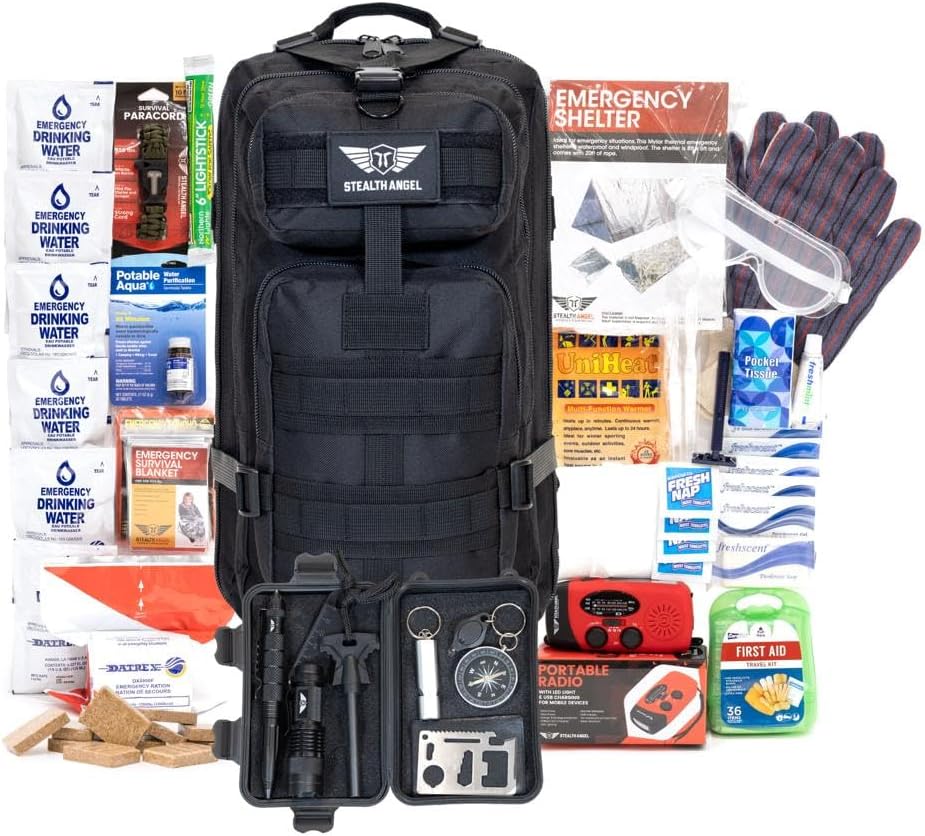
The MIRA Safety CM-8M Full-Face CBRN Gas Mask is designed as a high-performance solution for individuals seeking professional-grade respiratory protection. Whether preparing for potential disasters, engaging in tactical operations, or assembling a well-rounded emergency preparedness kit, this gas mask positions itself as a comprehensive, reusable tool offering strong defense against a wide range of airborne threats. Its features, functionality, and overall build quality warrant an in-depth examination to understand what makes it stand out in the competitive world of protective gear.
Design and Construction
The CM-8M gas mask has a rugged and modern look, engineered to meet the needs of both civilians and professionals. Its construction uses high-strength materials that feel durable and reliable in hand. The facepiece is built from high-grade silicone and butyl rubber, ensuring a tight seal without causing discomfort during long periods of use. It’s designed to accommodate most adult face shapes and sizes, and the fit is both snug and secure thanks to the flexible five-point head harness system.
One of the most significant design improvements over older military-style masks is the inclusion of a panoramic visor. The wide lens improves visibility without compromising safety, and it is resistant to scratches, fogging, and impact. This wide field of view allows users to remain situationally aware in high-pressure environments, whether navigating an urban disaster zone or operating in a tactical setting.
Filtration and Protection
What truly sets the CM-8M apart is its compatibility with industry-standard 40mm NATO filter cartridges. This gives the user flexibility to choose from a variety of certified CBRN filters, which can protect against a wide range of chemical, biological, radiological, and nuclear threats. The mask’s dual filter port design allows for left, right, or dual filter use, enabling customization for right- or left-handed shooters, or for more balanced breathing in high-exertion environments.
The filter port threads are strong and secure, allowing easy installation and replacement even in stressful conditions. When combined with a high-quality filter, the CM-8M offers a superior barrier against toxins, particulates, and vapors. This is especially beneficial for preppers and tactical users who may need long-term or repeated protection across various situations.
Comfort and Fit
Comfort is a critical factor in any full-face respirator, and the CM-8M scores well in this area. The mask’s internal design includes a soft inner mask that minimizes fogging and helps direct exhaled air efficiently. The silicone face seal is skin-friendly, and the adjustable straps allow users to get a precise fit. This is essential not only for comfort but also for ensuring a tight seal, which is necessary for effective protection.
The weight is well-distributed, and the mask does not feel overly heavy, even during prolonged wear. The drinking system, which is compatible with the included canteen, provides hydration without needing to remove the mask. This is a valuable feature during long-term exposure to hazardous environments where removing the mask is not an option. The drinking tube is simple to use and connects securely, adding to the mask’s practical design.
Versatility and Use Cases
The CM-8M gas mask is intended for a wide array of scenarios. It is suitable for emergency preparedness kits, professional tactical teams, law enforcement, industrial workers, and individuals in hazardous job environments. Its ruggedness and durability also make it ideal for outdoor survivalists, doomsday preppers, and those living in regions prone to environmental disasters or civil unrest.
This mask is not limited to rare emergency situations. It can also be used during wildfires, chemical spills, pandemics, or any situation involving airborne pollutants. Its reusable nature and compatibility with replaceable filters make it a long-term investment for safety-conscious individuals.
Storage, Maintenance, and Longevity
The CM-8M is designed for reuse and long-term functionality. It should be cleaned and stored properly between uses to maintain its integrity. The materials used are resistant to environmental degradation, meaning the mask can be stored for years if properly maintained. The panoramic lens should be kept scratch-free, and users should periodically inspect the sealing surfaces, straps, and filter ports.
MIRA Safety provides accessories such as carrying bags, voice diaphragms, and hydration systems, which further enhance the utility and lifespan of the CM-8M mask. As filters have expiration dates, users should rotate stock regularly and maintain a fresh supply to be fully prepared.
Performance Under Stress
During physically demanding tasks or high-adrenaline situations, the CM-8M performs reliably. The design allows for breathing with minimal resistance, and the inner mask helps direct airflow efficiently. The speech diaphragm, though not perfect, makes communication more intelligible compared to masks without this feature. While not as clear as speaking face-to-face, it is sufficient for team-based operations and emergency communications.
For those who carry weapons, especially rifles, the mask’s low-profile design and dual filter ports allow for easier cheek weld positioning, a challenge with bulkier gas masks. This enhances its utility for tactical users or trained marksmen.
Conclusion
The MIRA Safety CM-8M Full-Face CBRN Gas Mask with Canteen is a robust and highly capable respirator built to withstand real-world threats. It combines a modern design with practical features like a panoramic visor, dual filter compatibility, and integrated hydration. Its comfort, protection level, and versatility make it an exceptional choice for preppers, tactical professionals, and anyone concerned with personal safety in dangerous environments.



